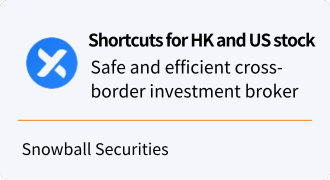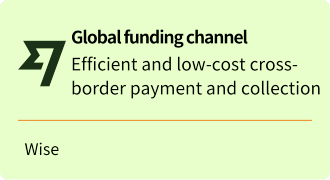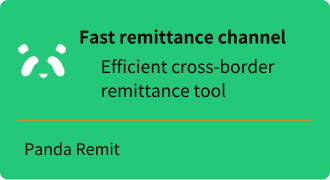50 Essential Canadian Investment Terms: Master TFSA, RRSP & ETF DCA Strategies
[DISCLAIMER] This article is for educational and informational purposes only and does not constitute investment advice. Readers should consult with qualified financial professionals before making any investment decisions.
As a "veteran" who has navigated the ups and downs of quantitative trading, I know that newcomers to the Canadian stock market can easily feel overwhelmed by the diverse terminology. What's a "TFSA"? What on earth is a "Blue Chip"? Not to mention the differences in terminology between English and French language regions, it's like deciphering a code! Don't panic – this blog will use down-to-earth language to help you master 50 essential trading terms, decode Canada-specific investment vocabulary, and reveal terminology pitfalls across English and French regions. If you're afraid of market volatility or uncertain about when to buy, this "terminology dictionary" will help clear the fog and set you on the path to financial freedom! Ready? Let's begin this investment discovery journey!
I. Why Do You Need a Canadian Investment Terminology Dictionary?
Investing in the stock market is like learning a new language, and terminology is your "vocabulary list." In Canada, stock market terms are not only numerous but become more complex due to the bilingual environment and unique market rules. For example, "dividend" in English is "dividende" in French, with subtle differences in context and usage. As a quantitative trading enthusiast, I've seen many people suffer losses due to terminology misunderstandings, such as ignoring "ACB" (Adjusted Cost Base) leading to excess tax payments. Today, I've condensed my experience into this "dictionary" to help you avoid detours and quickly get started in the Canadian stock market.
During the 2008 financial crisis, I had a friend who didn't understand "Margin" and borrowed money to trade stocks, losing 50% and slapping his thigh in regret! Terminology isn't just knowledge – it's a "firewall" protecting your wallet.
II. 50 Essential Trading Terms: From Beginner to Expert
The following are 50 carefully selected terms covering stock trading, investment accounts, market analysis, and tax rules, suitable for beginner to intermediate investors. Each term comes with a real-life analogy and practical explanation to ensure you understand at a glance!
2.1. Basic Terms: Stock Market "Entry-Level Bricks"
- Stock: A small portion of company "ownership" – buying stock is like buying a small piece of the company.
- Analogy: If you buy Tim Hortons stock, it's like owning a small piece of their cake – when business is good, you get a share of the profits!
- Dividend: A small portion of profit that the company distributes to you.
- Analogy: It's like planting a fruit tree that gives you a few apples each year.
- Blue Chip: Stable, reliable stocks of large companies, such as Royal Bank of Canada (RBC).
- Analogy: Blue chip stocks are like established brands in supermarkets – quality guaranteed.
- Bull Market: A market where stock prices are continuously rising.
- Analogy: The stock market is like a roller coaster, and a bull market is the exciting "uphill" phase!
- Bear Market: A market where stock prices are continuously falling.
- Analogy: A bear market is the "downhill" part of the roller coaster – timid investors are too scared to look!
- Equity: The total value of stocks in your investment portfolio.
- Analogy: It's like an "asset list" for your home, including stocks, cash, etc.
- Portfolio: All investment assets you hold.
- Analogy: Like your "financial fruit basket" filled with stocks, funds, and other "fruits."
- Volatility: The degree of price fluctuation in stocks.
- Analogy: Like ocean waves – high volatility stocks are big waves, low volatility are small ripples.
- Capital Gain: The profit made from selling stocks.
- Analogy: Buying a house at a low price and selling high – the difference is your capital gain.
- Yield: The percentage return on investment.
- Analogy: You plant a tree, sell apples for $100, with costs of $50, giving a yield of 100%.
2.2. Trading Terms: The "Lingo" Behind Buying and Selling
- Bid/Ask Price: The price buyers are willing to pay and sellers are willing to sell at.
- Analogy: Like haggling at a vegetable market – you offer $5, the vendor asks for $6, and you settle somewhere in between.
- Limit Order: Buying or selling stock at a specified price.
- Analogy: You tell your broker: "Buy Apple stock when it's below $50, not more!"
- Market Order: Buying or selling immediately at the current market price.
- Analogy: Like buying items at a supermarket – paying the marked price without haggling.
- Margin: Borrowing money to trade stocks, amplifying both returns and risks.
- Analogy: Using a credit card to buy a designer bag – feels good until you can't pay it back!
- Short Selling: Borrowing stocks to sell, hoping to buy them back cheaper and profit.
- Analogy: Borrowing a friend's bicycle to sell it, then buying one back when prices drop to return it, keeping the difference.
- Stop-Loss Order: Setting an automatic sell price to prevent large losses.
- Analogy: Like setting an "airbag" for your stock – if it falls too much, you automatically jump ship.
- Day Trading: Buying and selling stocks multiple times within a day to profit from small price differences.
- Analogy: Like quickly flipping goods at a flea market – making quick money but with high risk.
- Broker: An intermediary who helps you buy and sell stocks.
- Analogy: Like a real estate agent helping you find your dream "stock house."
- Commission: Transaction fees charged by brokers.
- Analogy: The service fee an agent charges for helping you buy a house.
- Liquidity: The ease of buying and selling a stock.
- Analogy: Like selling a house – popular locations (high liquidity) sell quickly, remote areas (low liquidity) are hard to sell.
2.3. Investment Account Terms: Canada's Unique "Tools"
- TFSA (Tax-Free Savings Account): An account where investment returns are tax-free.
- Analogy: A "magic wallet" where money can double without being taxed!
- RRSP (Registered Retirement Savings Plan): An account for retirement savings that provides tax benefits.
- Analogy: Like a "retirement piggy bank" – save tax when depositing, spend more comfortably in retirement.
- RESP (Registered Education Savings Plan): Saving for children's education with government grants.
- Analogy: A "tuition safe" for your child, with the government adding "pocket money."
- Non-Registered Account: A regular investment account where earnings are taxable.
- Analogy: A regular savings jar where the government takes a "share" of whatever you earn.
- FHSA (First Home Savings Account): An account for saving to buy a home, combining TFSA and RRSP benefits.
- Analogy: A "home-buying wallet" that saves tax on deposits and provides tax-free returns.
- DRIP (Dividend Reinvestment Plan): Automatically using dividends to buy more stocks.
- Analogy: Using the apples from your tree to plant new seedlings – snowball-style growth.
- GIC (Guaranteed Investment Certificate): A low-risk investment with fixed returns.
- Analogy: Like a fixed-term deposit – not high returns but rock-solid.
- Segregated Fund: An investment product with insurance features.
- Analogy: Like buying "investment insurance" with some principal protection.
- Locked-In RRSP: An RRSP transferred from a pension plan with restrictions on early withdrawal.
- Analogy: Like a "forced savings jar" that can only be opened at retirement.
- Tax Shelter: Legal means to reduce tax burden, such as TFSA and RRSP.
- Analogy: Like adding a "tax umbrella" to your wallet.
2.4. Market Analysis Terms: Understanding the Stock Market "Weather Forecast"
- P/E Ratio (Price-to-Earnings Ratio): An indicator of whether a stock is expensive.
- Analogy: When buying a house, you look at "price/rent" – P/E is "stock price/company profit."
- Beta: An indicator of stock volatility.
- Analogy: High Beta stocks are like sports cars – exciting but dangerous; low Beta stocks are like family sedans – stable.
- ETF (Exchange-Traded Fund): A collection of stocks bundled together to spread risk.
- Analogy: Buying an ETF is like buying an assorted fruit basket – tasting multiple flavors at once.
- REIT (Real Estate Investment Trust): A fund investing in real estate with stable returns.
- Analogy: Like buying an apartment building and collecting rent without managing it yourself.
- Market Cap (Market Capitalization): The total value of a company's stock.
- Analogy: Like estimating a company's "worth" – larger companies have higher market caps.
- Dividend Yield: The percentage of dividend relative to stock price.
- Analogy: If your tree gives you 10 apples worth $100 annually, the yield is 10%.
- EPS (Earnings Per Share): The profit a company earns per share.
- Analogy: If a company earns $1 million and has 100 shares, the EPS is $10.
- Book Value: The value of a company's assets minus liabilities.
- Analogy: Like your house's "net worth" – the value after deducting loans.
- Fundamental Analysis: Evaluating a company's value through financial statements.
- Analogy: Like giving a company a "health check" to see if it's healthy.
- Technical Analysis: Predicting future trends through stock price movements.
- Analogy: Like reading a weather map to predict tomorrow's weather.
2.5. Tax and Compliance Terms: Legal Tax Payment, Compliant Returns
- CRA (Canada Revenue Agency): The "manager" overseeing investment taxes.
- Analogy: CRA is the "supervisor" of your household accounts, watching your earnings for taxation.
- T3/T5 Slip: Tax documents recording investment income.
- Analogy: Your "investment report card" telling the CRA how much you've earned.
- ACB (Adjusted Cost Base): The basis for calculating tax costs when selling stocks.
- Analogy: When buying a house, including renovation costs – ACB is your stock's "total investment."
- NR4: Tax document for non-Canadian residents.
- Analogy: A tax bill for "outsiders," reminding them to pay taxes.
- Capital Loss: Money lost when selling stocks, which can offset taxes.
- Analogy: Buying a house at a high price and selling at a low price – the loss can be reported to offset tax.
- Withholding Tax: Tax on foreign investment returns.
- Analogy: When you buy US stocks, the US government takes a "cut" from your dividends first.
- Taxable Income: Total income subject to taxation.
- Analogy: All money you earn, minus tax-exempt portions, payable to the CRA.
- Strip Bond: A bond sold at a discount without paying interest, redeemed at full value at maturity.
- Analogy: Like buying a "discounted lottery ticket" and collecting the full amount at maturity.
- Eligible Dividend: Dividends from Canadian companies with tax benefits.
- Analogy: Like a government "dividend discount coupon" – pay less tax.
- Foreign Tax Credit: Offsetting taxes paid in foreign countries.
- Analogy: You paid tax in the US, and Canada "reimburses" part of it.
Ⅲ. Canada-Specific Investment Terms: The Local "Code Book"
The Canadian stock market has its own unique rules, with terms carrying a strong "maple leaf flavor." The following is a selected analysis of localized terms to help you quickly integrate into the Canadian investment environment:
- CRA (Canada Revenue Agency): Responsible for tax compliance and managing accounts like TFSA and RRSP.
- Analogy: CRA is like the "auditor" of your accounts, watching your investment returns.
- T3/T5 Slip: Tax documents recording dividends, interest, and other income – essential for annual tax filing.
- Analogy: Like your "investment report card" telling the CRA how much you've earned.
- ACB (Adjusted Cost Base): Calculating tax costs when selling stocks, including purchase price and fees.
- Analogy: When buying a house, including renovation costs – ACB is your stock's "total investment."
Case study: In 2010, Xiao Ming bought 100 shares of RBC at $50 each, with a $10 commission. His ACB is $5,010. If he forgets the ACB when selling, he might pay extra tax.
- NR4: Document recording withholding tax for non-residents investing in Canadian assets.
- Analogy: A tax bill for "foreigners," ensuring taxes aren't missed.
- Strip Bond: Bond bought at a discount without interest, redeemed at face value at maturity.
- Analogy: Like buying a "discounted lottery ticket" and collecting the full amount at maturity.
- CESG (Canada Education Savings Grant): Government grant for RESP accounts, up to $500 per year.
- Analogy: The government's "tuition red envelope" for children – the more you save, the more they match.
- OAS (Old Age Security): Government pension for residents over 65, potentially reduced if investment income is high.
- Analogy: Like a government "retirement subsidy," but you might get "deducted" if you earn too much.
- GIS (Guaranteed Income Supplement): Additional subsidy for low-income seniors.
- Analogy: Government "living allowance" for low-income elderly.
I had a friend who didn't understand "ACB" and reported taxes based on the original price when selling stocks, resulting in an extra $500 tax payment. Of course, contributing more to society through taxes is also commendable.
IV. English-French Bilingual Regional Terminology Differences: Don't Fall Into the "Bilingual Trap"
Canada is an English-French bilingual country, especially in Quebec, where French terminology can be confusing. Below are common terms in English and French comparison and potential pitfalls:
- Dividend / Dividende: The meaning is the same, but in French regions, it's more commonly used for fixed-income investments.
- Pitfall: Quebec investment documents might use "Rendement (returns)" instead, easily confusing dividends with total returns.
- Broker / Courtier: English "Broker" generally refers to stock brokers, while French "Courtier" sometimes refers to real estate brokers.
- Pitfall: When looking for an investment broker, confirm they are a "Courtier en valeurs mobilières" (securities broker).
- Mutual Fund / Fonds commun de placement: Both are funds, but French regions emphasize the long-term nature of "placement" (investment).
- Analogy: English is like "buying a fund," French is like "saving for retirement."
- Tax Shelter / Abri fiscal: TFSA and RRSP both qualify, but French regions often use "Régime enregistré" (registered plan).
- Pitfall: French documents might use "CELI" (Compte d'épargne libre d'impôt) for TFSA, easily overlooked.
- Capital Gain / Gain en capital: Profit from selling assets, with consistent tax treatment.
- Pitfall: French regions might use "Plus-value" instead – pay attention to terminology consistency when filing taxes.
Practical advice: When investing in Quebec, it's recommended to use bilingual investment platforms (such as Wealthsimple or Questtrade) and carefully check English and French terminology, especially when dealing with T3/T5 tax forms.
I once had a friend interpreting a French investment contract who was confused by "CELI" and "TFSA" until checking a bilingual dictionary and having an "aha" moment!
V. How to Make Money Using These Terms? Practical Investment Scenarios
Now that you've learned the terminology, it's time for practical application! Here are three scenarios teaching you how to "arm" your investments with terminology, combined with Canadian local tools and environment:
- Using TFSA for ETF Dollar-Cost Averaging: Invest $100 monthly into Vanguard S&P 500 ETF (VSP), leveraging tax-free advantages to accumulate gradually.
- Analogy: Like saving loose change daily in a "tax-free piggy bank" – after 25 years, it could become a Tesla!
- Data support: VSP has averaged 7.5% annual returns over the past 25 years. With $100 monthly investment, after 25 years, you could accumulate about $80,000 (compound calculation).
- Buying Blue Chip Stocks with RRSP: Use RRSP accounts to invest in RBC or CN Rail, with tax-deferred dividends and capital gains.
- Analogy: Like putting money in a "retirement safe," earning while saving on taxes.
- Data support: RBC has had approximately 4% dividend yield over the past 10 years, with about 9% annual total return. A $10,000 investment could grow to approximately $23,000 in 10 years.
Practical Investment Scenarios
- TFSA Dollar-Cost Averaging VSP vs. One-Time Investment Returns Comparison
- X-axis: Time (2000-2025) Y-axis: Cumulative returns (CAD)
- Blue line: $100 monthly investment, approximately $80,000 after 25 years.
- Red line: One-time $25,000 investment in 2000, affected by the 2008 crisis, fluctuating returns, approximately $65,000 after 25 years.
- Conclusion: Dollar-cost averaging is more stable, suitable for investors afraid of volatility.
VI. Common Misconceptions: Three Major Pitfalls for Beginners
- Misconception 1: More terminology equals more professionalism Truth: Terminology is for communication, not for showing off
- Analogy: You don't need to memorize 100 terms – understanding "TFSA" and "RRSP" is more important than anything else.
- Case study: I've seen beginners who believed in "fancy" terminology, bought high Beta stocks, and lost 30% – not worth it.
- Misconception 2: French terminology can be ignored
- Truth: In Quebec, French documents might be the only option – not understanding "CELI" could mean missing TFSA tax-free opportunities.
- Case study: A friend didn't recognize "Régime enregistré" and mistook an RRSP for a regular account, losing tax benefits.
VII. Conclusion: From Terminology to Wealth, What's Your Next Step?
Congratulations! By mastering these 50 terms, you've graduated from a stock market "novice" to a "semi-professional" player! Whether using TFSA for VSP ETF dollar-cost averaging or buying RBC blue chip stocks with RRSP, these terms can help you avoid detours and save real money. The Canadian stock market offers many opportunities, but there are also many tax and bilingual pitfalls. Starting today, I recommend:
- Action 1: Open a TFSA account and invest $50 monthly in VSP to try the "tax-free piggy bank" magic.
- Action 2: Review your T3/T5 tax forms, understand "ACB," and keep legitimate returns.
- Action 3: If you're in Quebec, download a French investment guide and compare "CELI" with "TFSA."
Deep insight: Investing is not just a terminology game but also a mindset practice. The 2025 market may fluctuate – don't get carried away in a bull market or panic sell in a bear market. Learn to arm yourself with terminology to have the last laugh.
Want to know the detailed comparison between TFSA, RRSP, and non-registered accounts? The next issue, "Detailed Explanation of Canadian Investment Account Types," will reveal the pros and cons of each account type to help you choose the right "wealth container"!
Are you a terminology "ace" or a "tax novice"? Feel free to share your investment story in the comments or tell me which term troubles you the most – I'll answer in the next issue! If you have a 25-year dollar-cost averaging dream, tell me your plan, and I'll calculate the returns for you!







